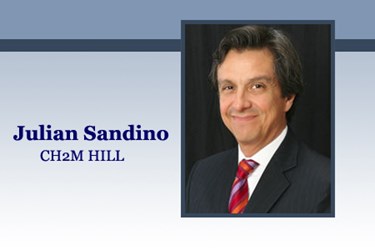Solving Wet Weather—The Impact On Secondary Treatment

Extreme wet weather events aren’t that common. But that doesn’t mean they should be ignored, says Julian Sandino of CH2M Hill.
“Utilities have for years not necessarily put priority in the management of those extreme flow events that only happen about 15 percent of the time,” says Julian Sandino, in an interview with Water Online Radio. “But now it’s imperative to manage those because of the impact it can have on receiving streams.”
Recent regulatory approaches suggest that all wet weather flows should go through secondary treatment. Sandino doesn’t feel this is the best method for handling large stormwater events.
“I would argue that is a gut reaction and is not scientifically based,” he says. “The problem with that is that secondary treatment can be significantly impaired by managing flows of very short duration events that are four to five times greater than typical dry weather flow.”
A regulatory framework needs to be established that minimizes the impact on secondary treatment, explains Sandino
“You cannot get both. You cannot have an optimized system that 85 percent of the time does the job efficiently and effectively for standard weather and then expect that it handles three or four times that amount during a short amount of time during an extreme flow event.”
To learn more about what CH2M Hill is doing to solve stormwater, click the link for the full Water Online Radio interview.
